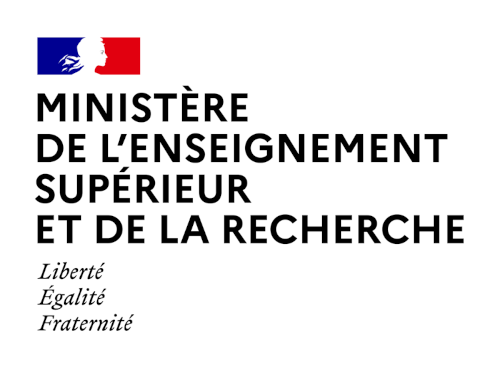Coordinators: Antonio Alvar Ezquerra (Universidad de Alcalá), Jonathan Edmondson (York University)
Organizing Institutions: École des hautes études hispaniques et ibériques (Casa de Velázquez, Madrid), Universidad de Alcalá
Collaborating Institutions: Centro CIL II (Alcalá de Henares), Consorcio Ciudad Monumental de Mérida, Museo Nacional de Arte Romano de Mérida, York University (Toronto), Fundación Pastor de Estudios Clásicos (Madrid), Universidad de Cantabria
Deadine for Applications: 21 January 2019, 6.00 p.m. (local time in Madrid)
For practical information, please contact: Clémence Genet: sechehi@casadevelazquez.org / 0034 914 551 580
The EFAE Research Programme
The theme of death and burial in the Roman world has been much discussed in recent scholarship on the Roman Empire, with a number of general studies as well as more specific ones on particular funerary sites in a number of provinces or on specific questions relating to burial and commemoration.
Studying the rich and complex epigraphic landscape of Augusta Emerita (Mérida, Spain), including the typology of its funerary monuments and the social and ideological contexts in which they were set up, reveals that this Roman colony is a reference point for studies on death and burial in the Roman world, given the large number of preserved inscriptions, the complexity of the site and its local social mosaic, where a distinctly Roman/Italian cultural profile was blended with elements of the indigenous substratum in various ways and at different levels, and the determining role that the city played in the centuries under consideration, not least when Mérida came to serve as the capital of the diocese of the Hispaniae.
The funerary landscape of Augusta Emerita is one of the richest in Hispania, both from an archaeological and an epigraphic point of view. It has been the subject of numerous studies, although many of these are partial. We lack in fact an overview of all the relevant material, which would allow us to address from a diachronic perspective the main issues related with the different types of burials and mortuary rituals, as well as the typological range of the funerary monuments and associated grave-goods and the growing impact of Christianity on the city´s necropoleis.
The project “EFAE: Funerary Epigraphy of Augusta Emerita” is the culmination of a research project (FFI2014-59393-P) that was financed by Spain’s Ministry of Economy and Competitiveness (MINECO) and coordinated by the Centro CIL II at the University of Alcalá de Henares. The main objective of EFAE is to complete a synthesis of the larger project and to disseminate results by opening access to the connected CILAESEP database, by publishing a monograph and by mounting a temporary exhibition, accompanied by a catalogue.
EFAE Research Programme website
Details of the Doctoral Workshop
The main aims of the workshop are:
-To demonstrate to participants a specific, notable example of the epigraphic habit of a provincial city outside Italy, a provincial capital and then capital of a diocesis: Augusta Emerita.
-To demonstrate to participants what can and should be done with an ancient Latin inscription, by focusing on certain particular aspects: (a) editing inscriptions according to the latest epigraphic research criteria; (b) the creation of an epigraphic database, focusing on the example that the project-team created and used in its work on the inscriptions from Emerita; and (c) the presentation to a non-specialized audience, where possible, either in a museum, in a specialized collection of archaeological objects of historical, artistic and cultural importance, or in a temporary exhibition on a precise theme.
-To present to participants a specific exhibition focusing on Latin epigraphy (“Siste, viator: Epigraphy in Ancient Rome”), which has been organized by members of the Centro CIL II, some of whom contribute to the Emerita project, and which will be on display at the University of Alcalá
-To present to participants a specific museum, the Regional Museum of the Community of Madrid, located in the city of Alcalá de Henares, in which, apart from archaeological finds from different eras, there is an important collection of materials from the Roman period, discovered for the most part in ancient Complutum.
Tutors
Antonio Alvar Ezquerra (Universidad de Alcalá)
Jonathan Edmondson (York University)
Helena Gimeno Pascual (Universidad de Alcalá)
Luis Ángel Hidalgo (Consorcio Ciudad Monumental de Mérida)
Javier del Hoyo Calleja (Universidad Autónoma de Madrid)
José María Murciano Calles (Museo Nacional de Arte Romano de Mérida)
Trinidad Nogales Basarrate (Museo Nacional de Arte Romano de Mérida)
Sabine Panzram (Universität Hamburg – Madrid Institute for Advanced Study-MIAS)
José Luis Ramírez Sádaba (Universidad de Cantabria)
Morgane Uberti (EHEHI – Casa de Velázquez, Madrid)
Practical Details
The sessions will take place in Madrid on 20-21 February, 2019, and in Alcalá de Henares on 22 February. The organizing institutions will arrange transport between both centres. Registration is free. Accommodation in double rooms at the Casa de Velázquez, as well as breakfast and lunch, will be provided by the workshop organizations. Individual participants will be responsible for their own transport costs to Madrid from their places of origin.
The sessions will comprise practical lectures offered by a team of tutors on how to handle epigraphic sources and how to use and exploit them effectively in historical research. The languages of the workshop will be Spanish, French, English and Portuguese.
Applicants, who must be current doctoral students, will be informed whether their applications have been accepted by January 25, 2019 at the latest.
Application form














